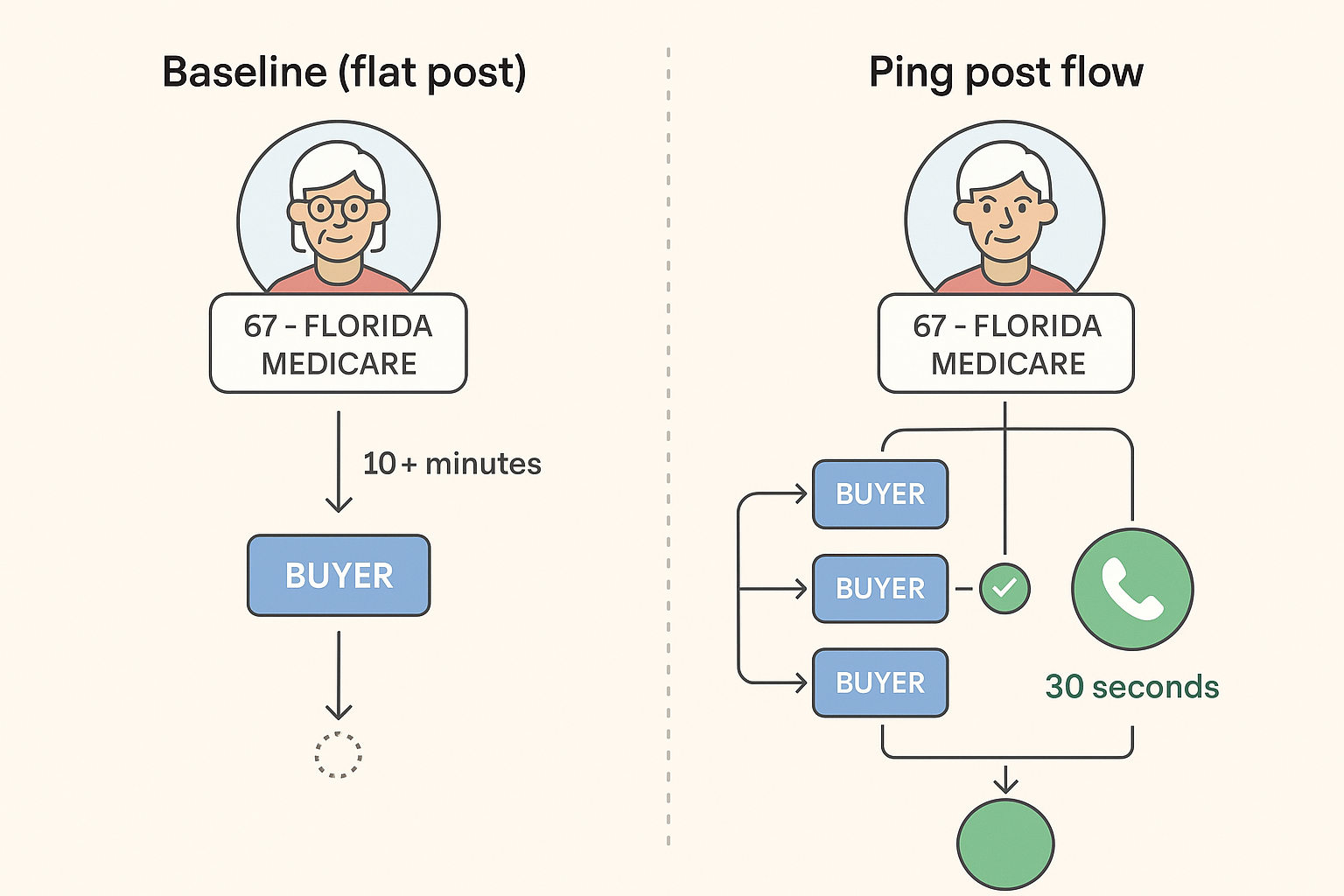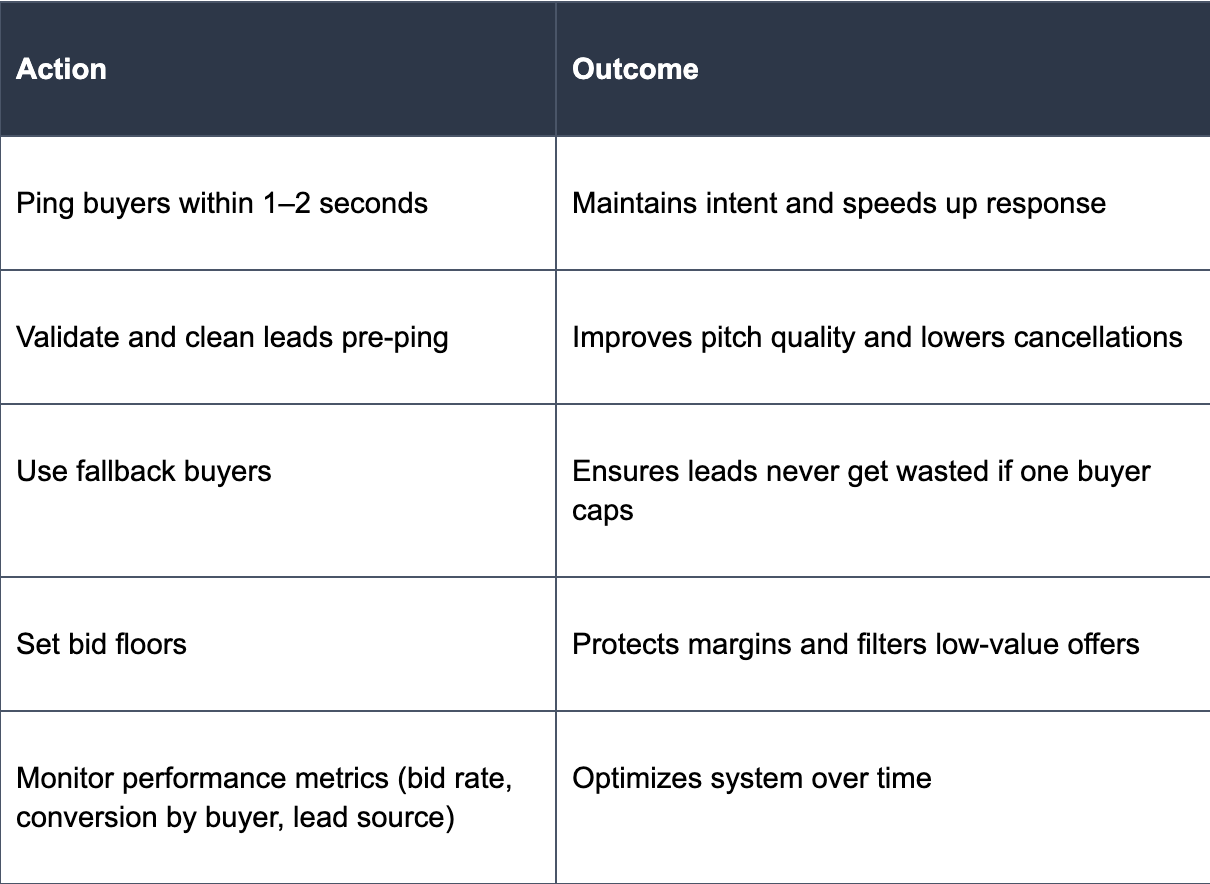If you’ve ever watched a lead sit in a spreadsheet for hours—or worse, days—you know what happens next: the buyer gets around to it and… crickets.
Contacting leads even 5 minutes later drops conversion drastically. Some studies show that contacting within one minute can convert up to 400% better. Timing isn’t just a nice-to-have—it’s everything.
✧ How Ping Post Brings Speed & Intent Together
Traditional delivery sends leads to one buyer—simple, but slow. Ping post lead distribution, on the other hand, pings multiple buyers instantly with partial lead data (e.g. ZIP, vertical, age range). Buyers bid or pass, and the system posts the lead to the winning buyer—usually within a second. That speed, combined with letting buyers approve leads before paying, makes conversion less hit-or-miss and more data-driven.
✧ The Causal Chain: Faster Routing → Higher Intent → Better Conversion
- Ping sent instantly (within demand window) → buyers see high-intent leads
- Buyer bids or accepts → they’re more likely to follow up
- Full lead data posted immediately
- Buyer contacts lead fast → faster contact = higher engagement = higher conversion
With ping post, you're not just selling leads—you’re delivering intent while it’s at its peak.
✧ Real-World Before & After: A Case Example
Imagine a Medicare campaign in Florida:
- Baseline (flat post): leads sent to a single buyer. Many go uncontacted for 10+ minutes.
- Ping post flow: leads pinged to multiple buyers—one responds within 600ms. Lead is posted and contact happens within 30 seconds.
In testing, the ping post setup converted at twice the rate, with fewer buyer rejections and stronger buyer satisfaction overall.

✧ Best Practices to Boost Conversion with Ping Post Software

Platforms like Standard Information offer built-in dashboards to monitor these metrics directly, making optimization part of the workflow—not a separate task.
✧ Why Most Attempts Fail (and How to Fix Them)
- Slow or manual routing: even loose automation doesn’t solve the lead decay problem.
- Low buyer participation: if only one or two buyers see the ping, you lose the bidding edge.
- Skipping validation: junk leads frustrate buyers and decrease future bids.
- Ignoring buyer performance: sold highest bidder today may refund tomorrow—look deeper than just price.
✅ Summary
Ping post lead distribution is not just about routing speed—it’s about matching the right lead to the right buyer at the right time. In industries like insurance, solar, and home services, this translates to significantly higher conversion rates, fewer wasted leads, happier buyers, and stronger margins.
Modern platforms like Standard Information make this easy to set up—even if you're scaling fast.